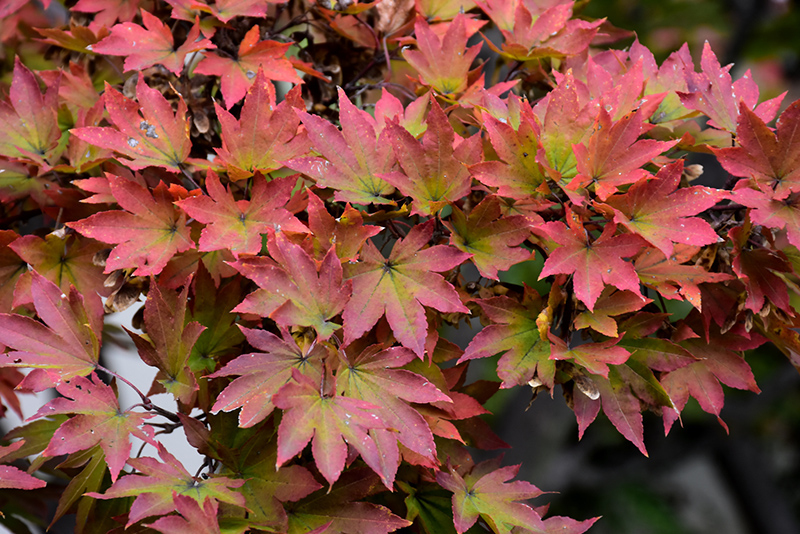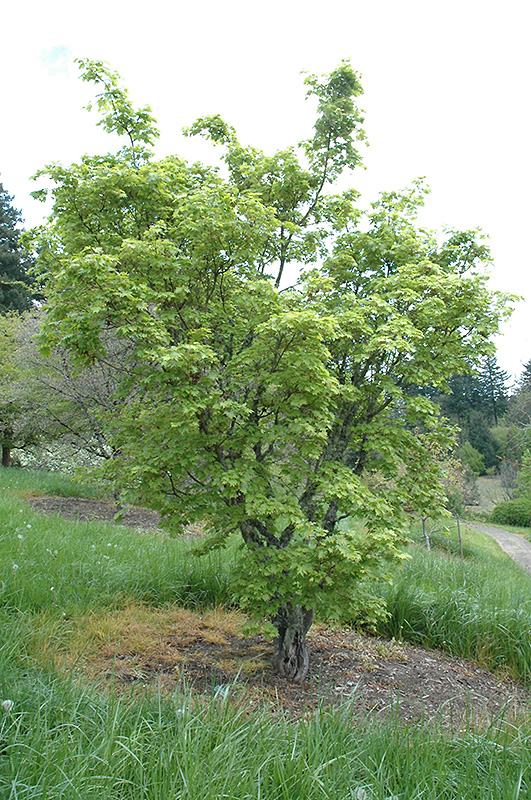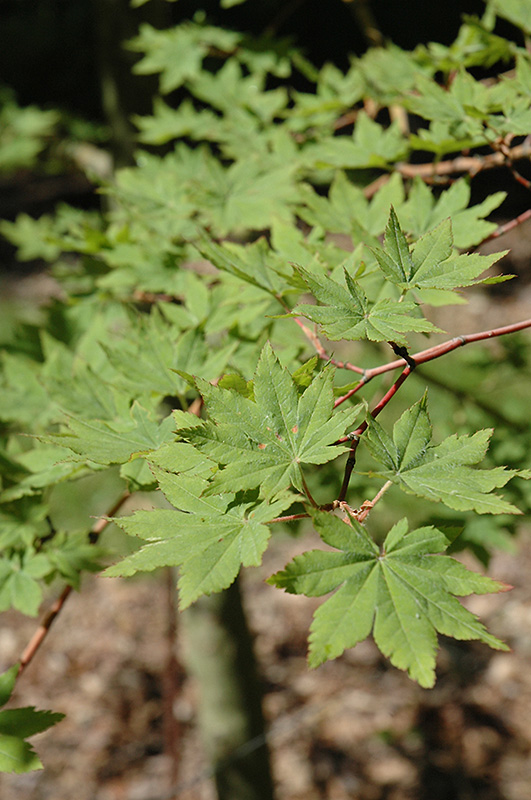Plant Finder
Height: 25 feet
Spread: 25 feet
Sunlight:
![]()
![]()
Hardiness Zone: 4b
Description:
A spectacular yet underused tree from the Japanese maple family, similar in many respects; deeply lobed foliage turns brilliant shades of orange, scarlet and red in fall; a refreshing deviation from run-of-the-mill maples for the collector
Ornamental Features
Siebold Maple features dainty corymbs of yellow flowers along the branches in early spring. It has green deciduous foliage. The serrated lobed palmate leaves turn outstanding shades of orange, scarlet and crimson in the fall.
Landscape Attributes
Siebold Maple is a deciduous tree with a more or less rounded form. Its average texture blends into the landscape, but can be balanced by one or two finer or coarser trees or shrubs for an effective composition.
This is a relatively low maintenance tree, and should only be pruned in summer after the leaves have fully developed, as it may 'bleed' sap if pruned in late winter or early spring. It has no significant negative characteristics.
Siebold Maple is recommended for the following landscape applications;
- Accent
- Shade
- Hedges/Screening
Planting & Growing
Siebold Maple will grow to be about 25 feet tall at maturity, with a spread of 25 feet. It has a low canopy with a typical clearance of 4 feet from the ground, and is suitable for planting under power lines. It grows at a slow rate, and under ideal conditions can be expected to live for 60 years or more.
This tree does best in full sun to partial shade. It prefers to grow in average to moist conditions, and shouldn't be allowed to dry out. It is not particular as to soil pH, but grows best in rich soils. It is somewhat tolerant of urban pollution. This species is not originally from North America.
This Plant Finder tool is an online catalog representing many of the varieties that we carry over the course of the season, and is intended for informational purposes only. Inventory varies seasonally, so we cannot guarantee that every plant will be in stock at all times - please contact the store for current availability. It does not include our entire inventory of plants, so be sure to visit us to see varieties that may not be represented on this list.



